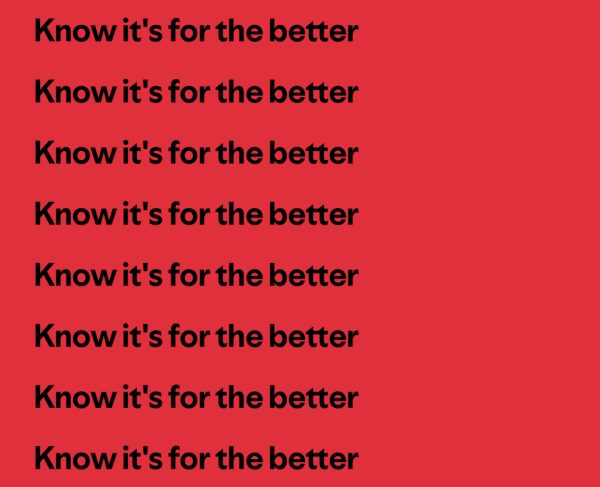Cessation workshops diminish smoking habits one cigarette at a time

Health teacher Judy Sanzo is the KATS Club advisor.
Wide-eyed students sit attentively in Kids Against Tobacco Smoking (KATS) Club advisor Judy Sanzo’s crowded classroom while district psychologist Violet Mesrkhani gives a lecture about the dangers of smoking. These meetings are known as cessation workshops, and they are held weekly at lunchtime, part of GUSD’s effort to minimize the number of students hooked on both regular and electronic cigarettes and hookah.
“[Mesrkhani] goes into the actual emotional and psychological reasons as to why people start smoking,” Sanzo said. “Then, she breaks it down physiologically and explains how smoking affects the body.”
As of now, approximately 35 students attend the workshops, but all Clark students are invited to attend. While students who would like to quit smoking are especially encouraged to attend since strategies for quitting are discussed, most of the students who attend are simply interested in learning more about the dangers of smoking, so Meserkhani also teaches actions students can take in order to help their friends and loved ones quit the habit.
Yet Mesrkhani and Sanzo also realize the power of a preventative approach. Sanzo said that while she and Mesrkhani gear the program towards students helping others, she hopes informing students of the negative aspects of smoking will discourage them from ever picking up a cigarette in the first place. “The best way to not become a smoker is to learn as much as you can about it,” she said.
Mesrkhani’s lectures range a variety of topics starting from regular cigarettes that have been around for decades to the more modern electronic cigarettes to the latest fad most popular among high school and college students: hookah.
During her lectures, Mesrkhani relates information about the effects of smoking and shares nationwide statistics. According to the Centers for Disease Control and Prevention (CDC), smoking damages almost every organ in the body. More than 480,000 people in the United States die because of the habit. As a result, smoking is responsible for approximately one in five deaths in the country.
In addition, smoking has been found to increase one’s risk for coronary heart disease and stroke by two to four times than that of a nonsmoker. It also increases the risk of acquiring lung cancer by 25 times. However, these statistics do not merely apply to those who smoke frequently-even those who smoke fewer than five cigarettes a day have been found to possess premature signs of cardiovascular disease. Because cigarettes have been around for such a long amount of time, many students are well aware of the risks they pose to one’s health; however, not much is known about the new, electronic cigarettes that have appeared in stores recently.
Many mistakenly believe that electronic cigarettes, commonly known as e-cigarettes, are a safer alternative to the plain old regular cigarettes because they believe that the latter have fewer harmful chemicals. E-cigarettes do not contain tobacco; instead, smokers inhale nicotine vapor. While at first these e-cigarettes may seem harmless, health experts question their supposed safety and are in the process of investigating potential risks and side effects of the inhalation of nicotine.
Consequently, opponents of the e-cigarettes are requesting that the cigarettes be banned until further research can be completed to ensure their safety. Because these e-cigarettes do not contain tobacco, the U.S. Food and Drug Administration is not required to approve their sale. Not only do the e-cigarettes appeal more to youth because they are supposedly safer than regular cigarettes, they are also more appealing because they can be bought without requiring evidence of the customer’s age. Junior Biura Markarian, who attends the workshops regularly, said, “Many students do not know about the dangers of e-cigarettes, so they tend to use them more than the regular kind. Fortunately, the workshops are very informative, and students who attend are urging their friends to discontinue these bad habits.”
Meanwhile, a new habit has developed among America’s youth. High school and college students have recently discovered hookah, a water pipe in which a special kind of flavored tobacco is placed and the steam from the water combined with the tobacco is inhaled. The varying flavors of the tobacco, which range from apple to chocolate and coconut, are part of the reason as to why students find hookah so attractive.
As with e-cigarettes, many who smoke hookah are not aware of the dangers. According to the CDC, hookah actually poses many of the same risks that regular cigarettes do. Contrary to popular belief, even after the tobacco has passed through water, the smoke that is inhaled still contains many harmful chemicals. The tobacco juices then have the ability to irritate the smoker’s mouth and cause lung, bladder and oral cancers.
When compared to smoking regular cigarettes, smoking hookah actually has more negative aspects. A typical hour-long session of hookah consists of approximately 200 puffs while a regular cigarette consists of 20, and the amount of smoke inhaled during a hookah session is 180 times greater than the amount of smoke inhaled by smoking a cigarette.
Also, even though not as much tobacco is inhaled through a hookah as is through an average cigarette, just as much, if not more, of the extremely addictive drug nicotine is inhaled through the water vapor. The deceitful “glamorous” side of hookah blinds many smokers to its dangers, but that “glamour” can just as easily deteriorate once the truth is exposed.
Mesrkhani discusses regular and electronic cigarettes and even informs students about the dangers of hookah in her lectures. Senior Christina Galajan, president of KATS, said that the cessation workshops have changed since last year, which was the first year the workshops were held.
“I think that last year we covered more basic information,” Galajan said, “but now that most of us are attending the workshops for our second year, Dr. Mesrkhani is covering more about electronic cigarettes and hookah since those have gotten really popular in our area.” Galajan said she believes the workshops have made an incredible difference with the students, because they finally understand what is going on in their bodies as a result of their smoking both cigarettes and hookah.
The dangers of smoking are not the only information Mesrkhani relates to students. In the past, she has discussed how drinking alcohol and eating unhealthy foods affect people’s bodies and affect them both mentally and physically. “One of the coolest lectures that she’s done was about foods and moods,” Galajan said. “She talked about how the food you eat can affect your mood throughout the whole day, and she explained why we feel better when we eat healthier foods rather than junk food.”
Nevertheless, Mesrkhani focuses on lecturing more about the impact smoking has on one’s body and mind. KATS members are especially encouraged to attend the lectures, as they can become more informed when they present their own lectures to other middle schools.“It helps us KATS students learn more in-depth information so that when we go on our trips and speak to students, we are able to give them more detailed and thorough information than what is just in our Powerpoints,” Galajan said. “We talk about a lot of these issues in KATS, but we wanted to make this information more available and open to more students. Some students are busy and not able to make the commitment of joining the club, so bringing the workshops to the school has been really helpful to not only KATS members but everyone in the school.”












